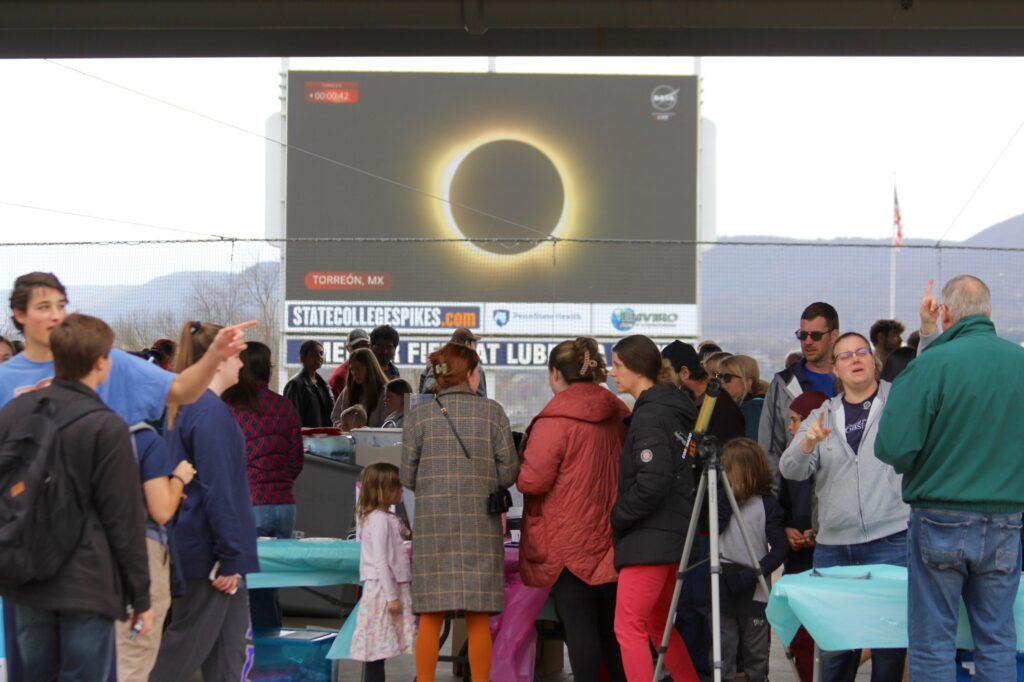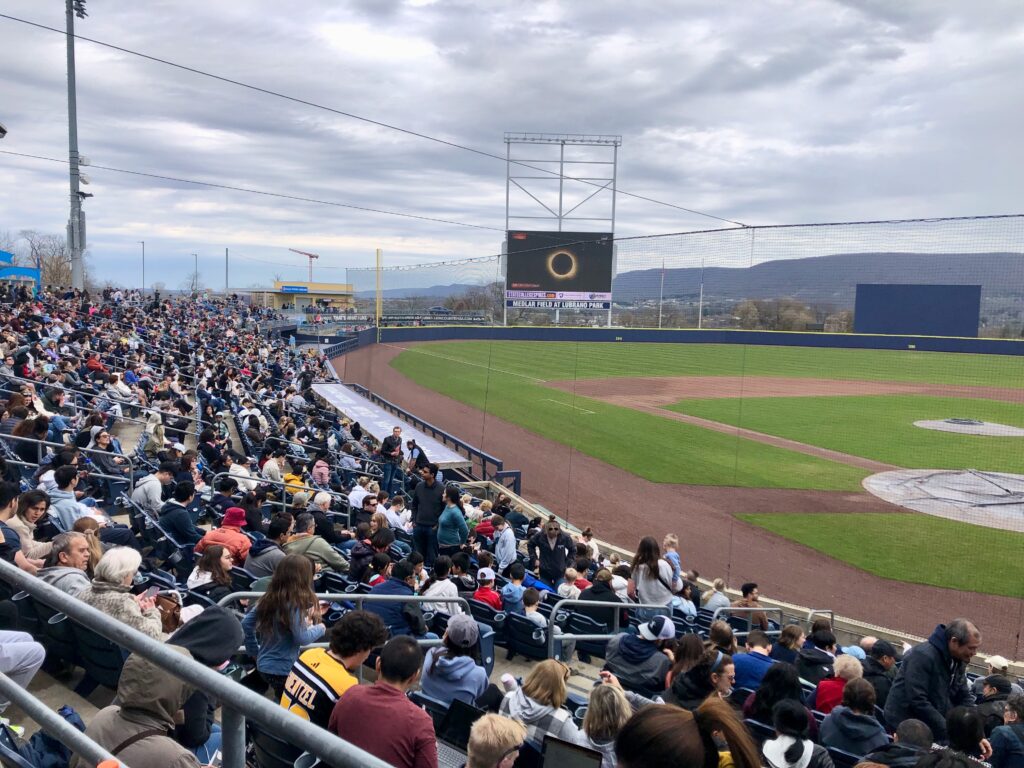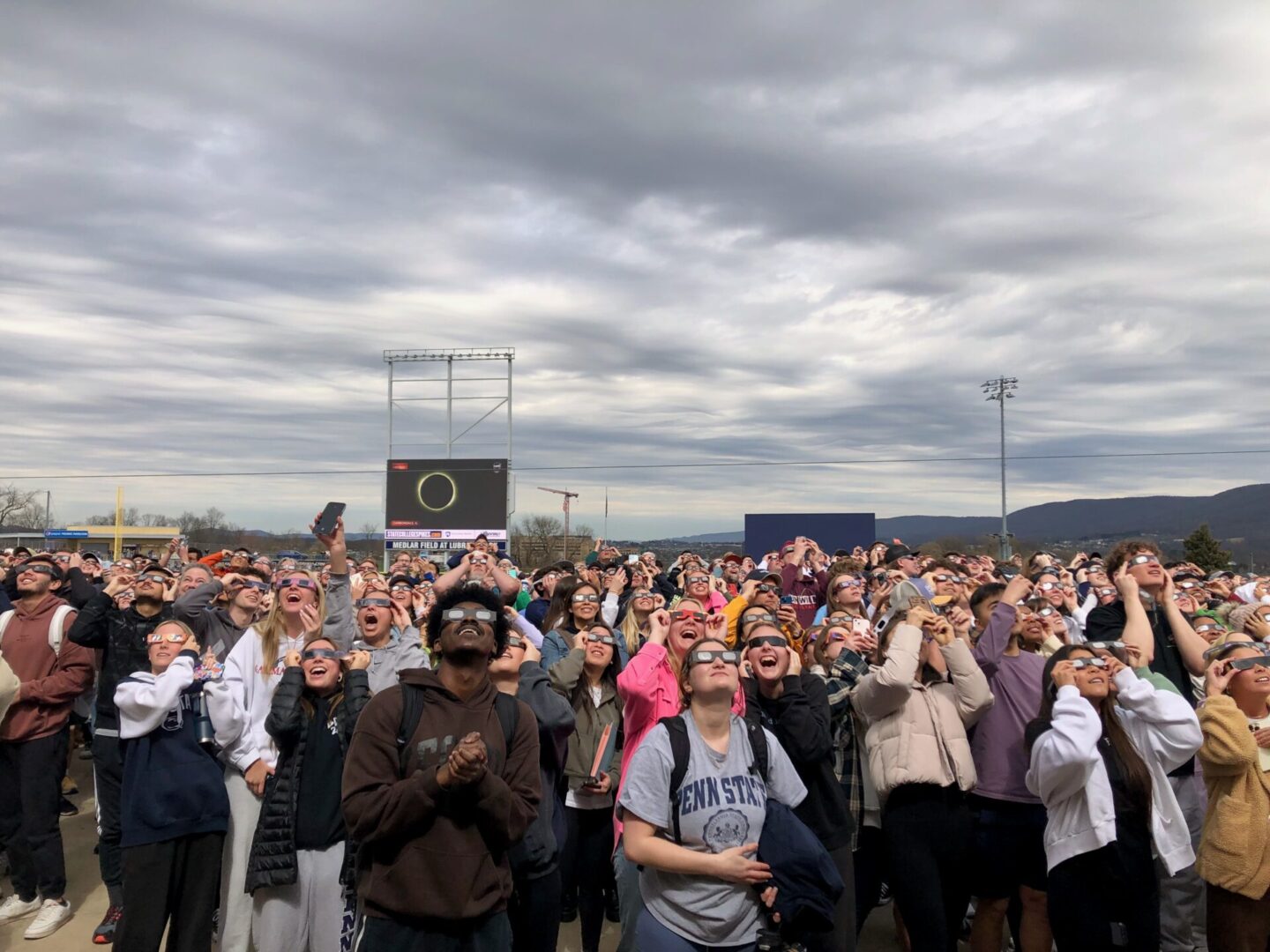Cloud cover dampened the spectacle, but it didn’t douse the enthusiasm for thousands who turned out for a solar eclipse viewing event on Monday afternoon at Medlar Field at Lubrano Park.
Hosted by the Penn State Eberly College of Science and the State College Spikes, SolarFest brought together community members for an afternoon of science and fun leading up to the eclipse, which reached maximum coverage in Centre County at about 3:20 p.m. Eric Feigelson, distinguished senior scholar and professor of astronomy and astrophysics, provided some narration as the eclipse occurred.
The State College area was in the 95% coverage area, just outside the path of totality, which passed through Crawford, Erie, Mercer, and Warren counties in Western Pennsylvania. It was the first total solar eclipse with a path of totality through the Keystone State since 1806.
Centre County’s partial eclipse began at 2:04 p.m. and ended at 4:32 p.m. With overcast skies throughout the afternoon, it wasn’t exactly a dramatic display, though brief breaks in the clouds did allow a few seconds to catch a glimpse of the moon passing in front of the sun. Otherwise, the eclipse was only observable by the gradually darkening sky, which dimmed as if a heavy storm was moving in before brightening again.

Nevertheless, it was a fun and educational afternoon at the ballpark. While a live feed of NASA’s coverage of the eclipse in cities throughout the path of totality was shown on the video board, organizations like Discovery Space and Penn State’s colleges of science and engineering had activities and experts on hand along the concourse.
Among them was Students for the Exploration and Development of Space (SEDS), which had its competition rocket on display and later in the afternoon launched a smaller version.
“For our competition rocket, you have to be about a mile away from the rocket when we launch it for safety reasons,” explained SEDS member Benjamin Stoudt.
The event offered an opportunity for SEDS to share their work and encourage interest in rocketry.
“For us it’s a great outreach event to show the kids of the State College area what it is you can do in rocketry if you love space, or if you want to come to Penn State and work with our team, what the College of Engineering does,” Stoudt said. “Professionally, it helps us convey what we learned as part of the club to help get more people into the industry. Really it’s a great outreach event and we’re appreciative of the organization for inviting us here today.”

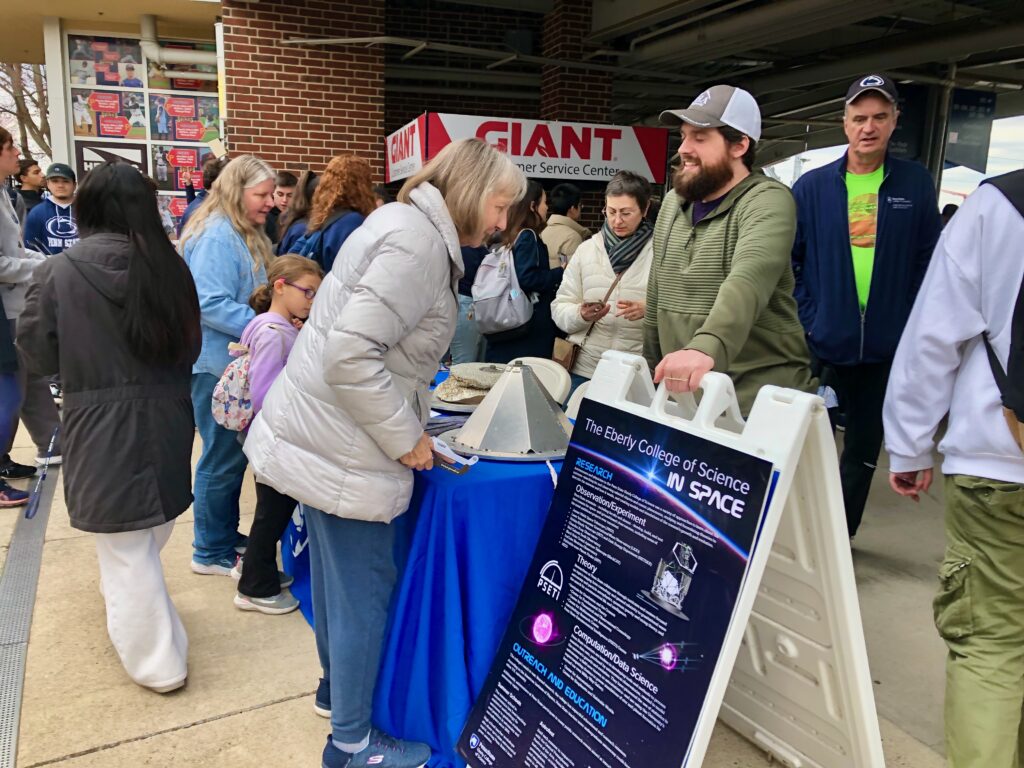
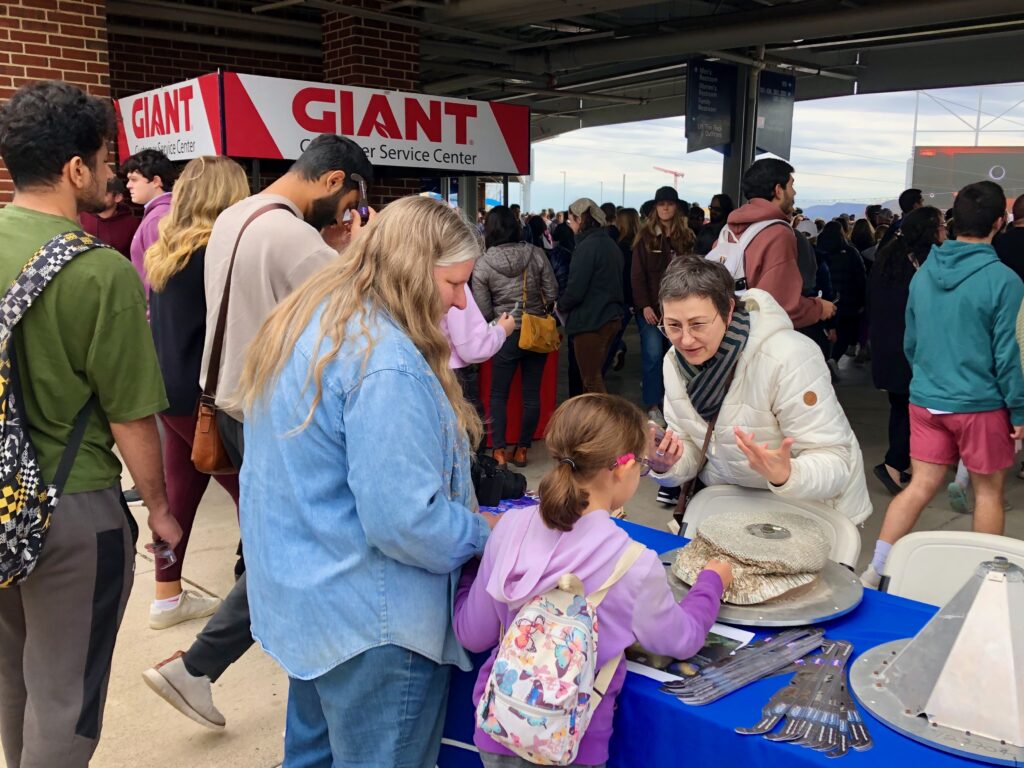
Mitch Wages, a research engineer in Penn State’s Department of Astronomy, was also excited to share part of a project he works on.
On display at an Eberly College of Science table was what Wages called “essentially a rocket bumper.” Used in sounding rocket missions led by principle investigator Randy McEntaffer, department head of astronomy and astrophysics, they lessen the impact when the rockets return to the ground.
“Even though they have a parachute, they still impact the ground pretty hard,” Wages said. “So we’re here showcasing these and getting people excited about space science and everything like that. We want to make sure that they can get this hands-on experience and get excited. Touching something that went to space is always a fun time.”
Like Stoudt, Wages said the afternoon made for a great outreach opportunity.
“As you can see now, surrounded by all these people, it’s a huge impact to try to reach as many people as possible,” Wages said. “Understanding that there’s going to be an eclipse, that’s a really easy thing to be excited about, but all these other smaller projects, all this other hands-on stuff that they can get involved in, now’s the time to showcase this to a larger audience.”



It will be awhile before people in the United States can get excited about seeing another total solar eclipse. The next one visible in the contiguous United States will be Aug. 23, 2044, and that will only be visible in Montana, North Dakota and South Dakota. The next with a cross-country path of totality will be Aug. 12, 2045, and the next with a path of totality that touches Pennsylvania won’t be until May 1, 2079.
